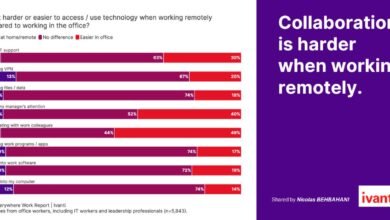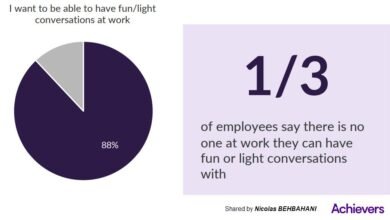
By | Abhijit Bhaduri |Keynote speaker, Author and Columnist
The organization is no longer like an aquarium that has a solid boundary wall. Three factors have driven this change.
- Boundaryless: Anything that gets digitized behaves differently. What used to be called a car is best thought of as an internet-connected computers on wheels. When a hotel is reimagined as an internet-connected room available to anyone anywhere, we understand what made Airbnb grow so much. Internet-connected entertainment has been made accessible to by Netflix to 139 million paid subscribers in 190 countries. The digital organization is boundaryless. It is not limited by geography or even its initial business model.
- In perpetual beta: Everything that can be digitized is being done. Facebook has digitized our friendship and news. Tinder is digitizing romance. Amazon started by digitizing the book and then went on to digitize the reading experience along with the experience of buying and selling anything. When they had online retail figured out, they reimagine the grocery store and removed cashiers and check-out lines. Microsoft has gone beyond office software. Apple has moved from hardware to services.
- Hyperconnected: People are no longer content with having a phone to make phone calls. They now expect a phone to be connected to the internet and capable of running apps that are the symbol of the digital world. We are now able to “talk” to machines and make them carry out tasks that are repetitive and rule-based. One forecast is that by 2035 the world will have a trillion connected computers, built into everything from food packaging to bridges and clothes.
The organization is no longer like an aquarium that has a solid defined boundary wall. The organization is part of an ecosystem. Leading the fish in an aquarium is different from navigating the ocean.
 Three reasons why leaders need new skills
Three reasons why leaders need new skills
- Hyperconnected employees and consumers: The organization’s brand is not owned by the organization. It is created every single day in real time by the employees and consumers or customers who are hyperconnected. What they say about you online is what everyone knows and believes about you. In a hyperconnected world, problems get solved and innovations happen differently. To find the best algorithm to predict user ratings for films, Netflix offered a million-dollar prize to anyone. The result was that the best brains competed for it and solved a problem. GE challenged the public to redesign a metal jet engine bracket, making it 30 percent lighter while preserving its integrity and mechanical properties like stiffness. The contest was announced on GrabCad. The winner was a participant from Indonesia who managed to make it lighter by 84%. This was way beyond what GE had been able to achieve with their own employees and consultants.
- The new media is changing communication: Social media has changed how people consume media and how they form opinions and take decisions. The leaders have to understand how to communicate on social media platforms like Twitter, Instagram, Facebook etc where each platform has its unique unspoken rules. The always on hyperconnected media demands responses in real time and authentic. An angry customer will vent on social media. They expect instant redressal. An employee will share their views about their experience at work or even with their managers through photos and posts on social media. The CEOs are often expected to take a stance on social issues as well as political issues. That does not leave time to craft a legally defensible statement endorsed by lawyers. CEOs of Apple, Google and Starbucks have had to take a stance on issues ranging from immigration to data privacy and LGBTQ issues. Candidates seem to think positively about the CEOs who take a stance on socio-political issues even when their personal views do not concur with the leaders. “CEOs campaigning for humanistic values will increase job pursuit intentions when compared to CEOs remaining neutral, while CEOs campaigning for non-humanistic values will decrease job pursuit intentions when compared to neutral or humanistic CEOs.”iii
- Leaders do not have the answers: In the analog world, experience mattered. The leader had all the answers whenever the team members had questions. In the digital world the problems that are coming up have no precedents. If you are a pharmaceutical company how do respond to the threat of Amazon buying Pillpack – an online pharmacy the lets users buy medications in pre-made doses. How does an automobile giant like Tata Motors deal with the new emission standards that the regulators introduce? How does New York Times deal with the consumers preference to get their news on Facebook? With the first store opening in DC in 1948, Toys R Us filed for bankruptcy in September 2017. Microsoft missed the mobile revolution altogether under Steve Ballmer’s leadership. He also dismissed the iPhone when it was launched because he looked at the future from the lens of the past. The leader’s role is to ask better questions – not to be the one-stop-shop for answers. Having the humility to say, “I don’t know” may be the greatest value-add by a leader so that the rest of the organization stops trying to second guess the leader. Satya Nadella has described this shift in as a “learn-it-all” culture – not a know-it-all culture. In the digital world, the knowledge and skills may lie with people who are much younger in age and often without prior experience and credentials because there are new jobs being created that have never existed before. The leader’s role has changed.

The new role of leaders
- Digital transformation is about transforming the mindset – not tech: Most organizations get excited by a technology (eg robotics or AI) and try to bolt it on to the analog processes. When we think of the word transformation, we have to remember the best example of transformation – the caterpillar turning into a butterfly. Transformation is irreversible. The change is not easy, and the butterfly is a completely different creature than the caterpillar. The digital transformation of an organization cannot be thought of as a tech project. It is about reimagining the business model and the value proposition by putting the customer at the center. It is about designing an experience.
- Leaders have to navigate ecosystems: Think of talent in a boundaryless manner. Like the hyperconnected world, it is www ie whoever, wherever, whenever. Whoever is the best person to do the job (employee, supplier or gig worker), wherever the person may be located in the world, make it easy to collaborate whenever needed. The leaders have to learn how to communicate and engage talent. This is a new skill that every leader needs to learn. Collaborations with tech startups can help legacy organizations to get access to cutting edge technology. The startups get access to a large customer base that the legacy organizations have. It can be a great win-win.
- Balancing polarities: The digital businesses are often built on gathering vast amounts of data that is used to personalize the service. The leaders have to be ethical about what data is being collected, how it is stored and how it is being used. They have to set the limits themselves. Tim Cook says, “Data assembled to create a digital profile lets companies know you better than you know yourself. This is surveillance.”
The digital organizations are as different from the legacy organizations as the butterfly is to the caterpillar. Leading these organizations needs not just new set of skills and competencies but also a different mindset. The hyperconnected customer is more aware and makes decisions and choices differently. The power balance has tilted in favor of the employees and consumers. They own the brand. The leaders role is now about helping the organization go from the aquarium to become part of ocean.
Republished with permission and originally published at abhijitbhaduri.com






